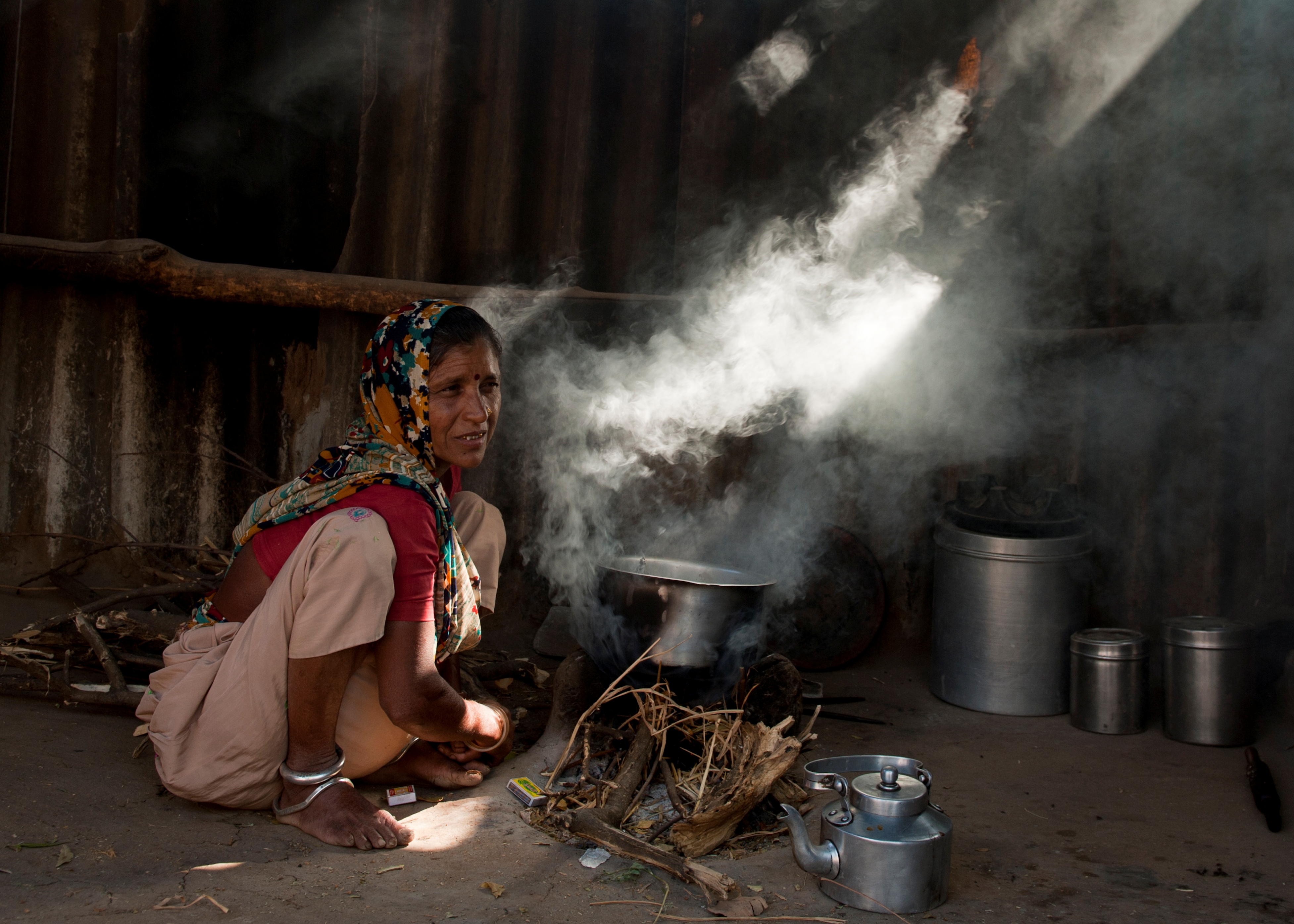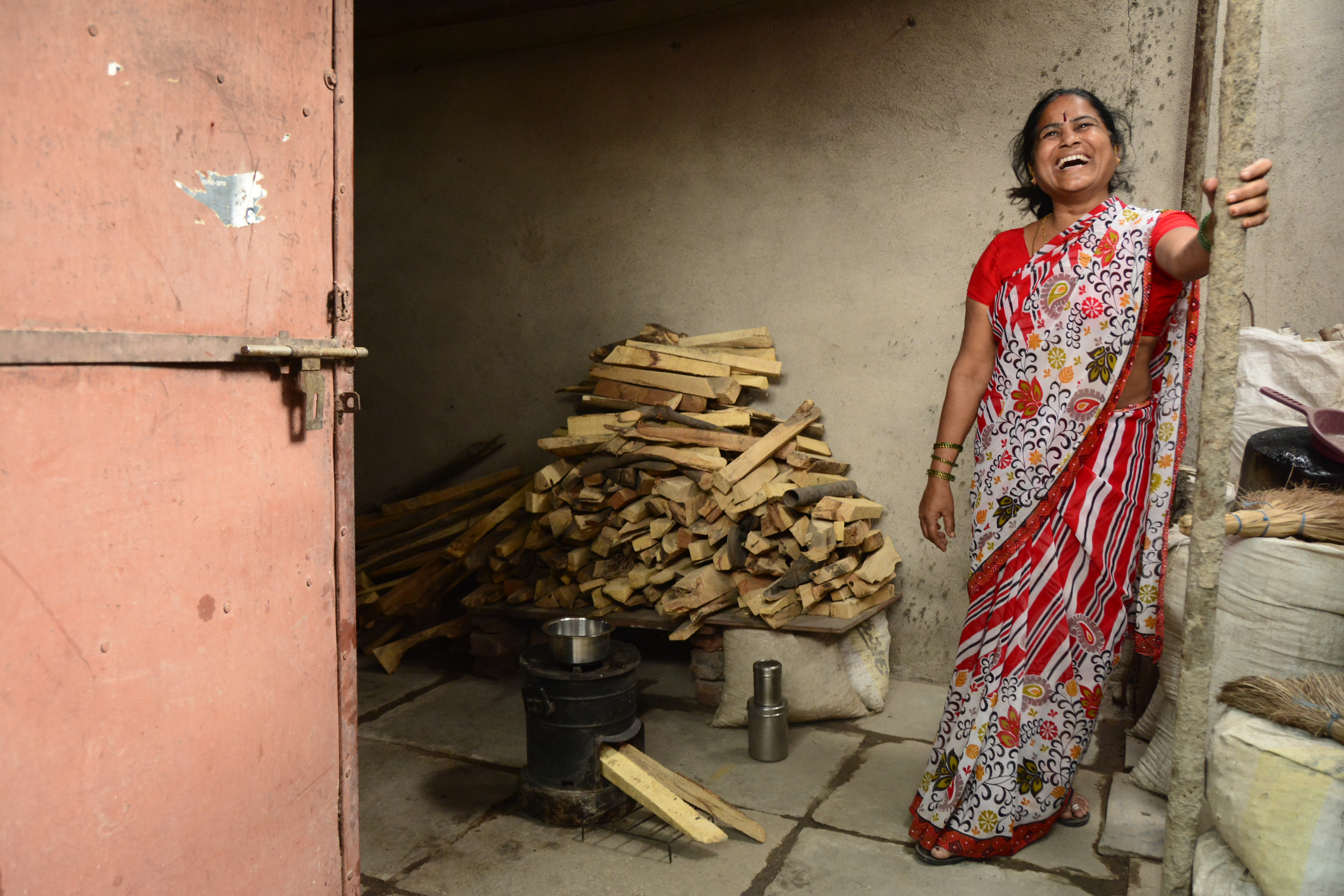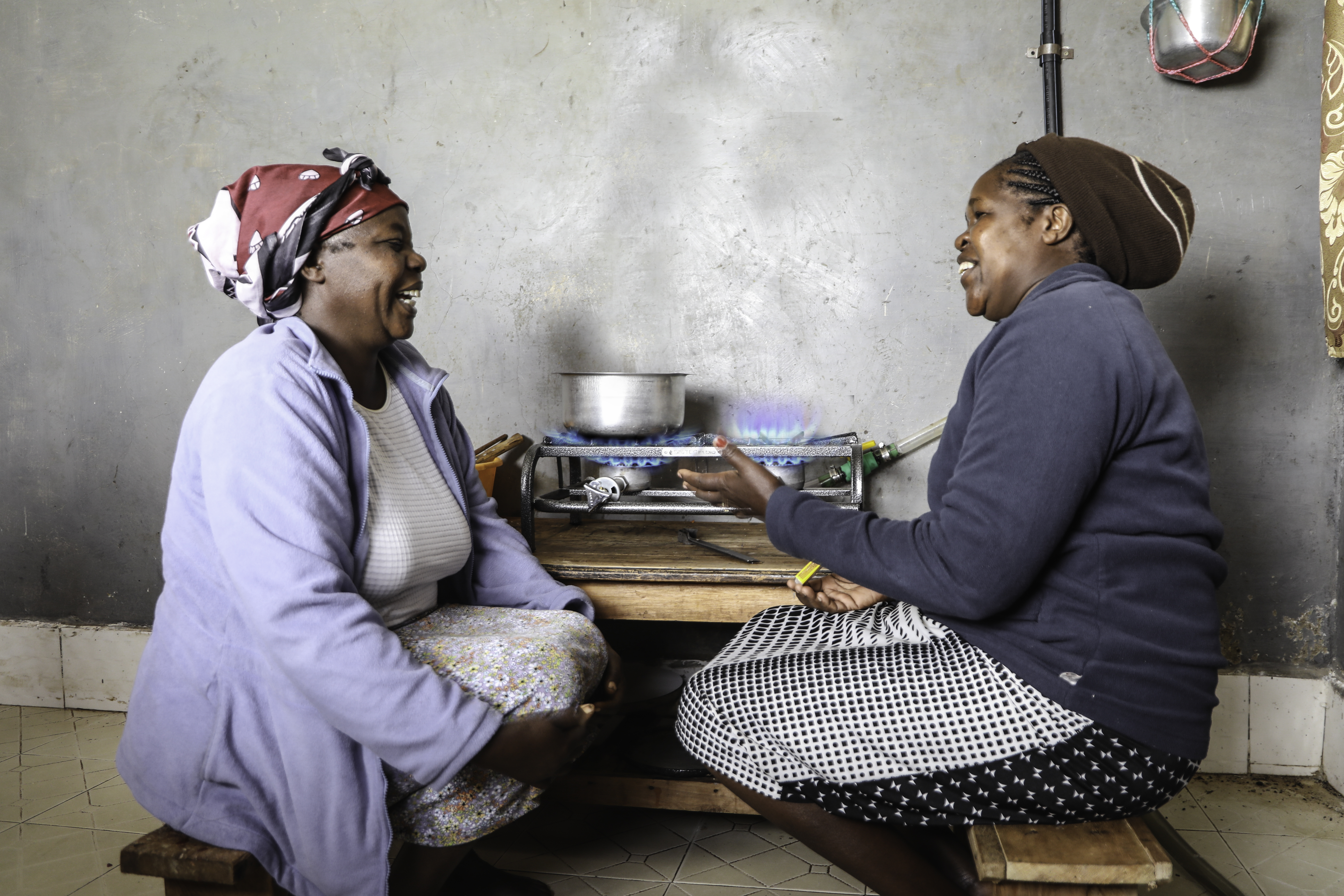How Can We Address Climate Change, Pollution, And Women’s Empowerment? Clean Cooking
This interview with Alliance CEO Dymphna van der Lans was featured in The Beam #10 – Local Heroes of the Energy Transition.
From the World Wildlife Fund to the Clinton Foundation, and BP Alternative Energy, Dymphna van der Lans has been working in global development, energy and climate initiatives in the nonprofit and private sectors for more than 25 years. Today, she is the Chief Executive Officer of the Clean Cooking Alliance.
When I asked where her passion for these topics comes from, she explained: “We need energy for everything from running businesses to powering health clinics, to cooking our daily meals. But if we don’t think carefully about how we generate that energy, we can negatively impact our environment, our climate and the wellbeing of our global community.” Here we discuss with Dymphna real solutions to achieving global clean cooking for all and the positive impacts it would have on climate change, air pollution and women’s empowerment.
“The global community
cannot reach its goals
of eradicating poverty and
ending climate change
without addressing the way
millions of people cook.”
Throughout your career, you have worked and lived in China, India and Kenya. You also engaged with island nations in the Caribbean and the Indian and Pacific Oceans to support their transition away from polluting diesel fuels to renewable sources of energy. What is the most valuable knowledge you have gained from these experiences?
These experiences have taught me that decisions inevitably have both intended and unintended consequences. In thinking about a global energy transition and managing climate change risks, we need a whole-systems approach that takes into account as many of these potential consequences as possible. Working and living in communities around the world, I have also come to appreciate the importance of strong partnerships. At the Clean Cooking Alliance, I am constantly emphasising the need to engage with other partners in the clean cooking sector. Alone, there is simply no way to address climate change and energy access with the scale and urgency that is required. Therefore, we need to constantly ask ourselves, are we collaborating enough, are we clear about how we can contribute to solving these issues, and are we creatively leveraging each other’s strengths?
Progress on energy access and clean cooking remains slow despite the magnitude of the issue, with close to four million premature deaths each year due to cooking emissions. How do you explain that there is so little attention nor investment in clean cooking?
To date, investment in clean cooking has been significantly less than the US$4 billion annually that is needed to achieve universal access by 2030. To reach that goal, the industry needs 100 times more than what it’s seeing now.
Part of the challenge lies in the inherent complexity of scaling access to cleaner, more modern stoves and fuels. It can be difficult, in any context, to reach markets serving the poorest communities. The clean cooking sector faces unique circumstances, including the need to regularly supply fuel that is cost-competitive with traditional biomass fuels; offer technologies that simultaneously provide significant health, environmental, and time-saving benefits while meeting consumers’ expectations about how food should taste, and convince consumers to replace their methods of cooking, which oftentimes are rooted in long-standing cultural traditions and are incredibly personal activities.
Another reason why clean cooking has not been prioritised is that it often is not associated with many of the global priorities it affects. When it comes to addressing large-scale challenges like climate change, air pollution and women’s empowerment, most people don’t think that changing the way people cook can be a solution. Clean cooking does not garner the same level of international attention as many other development challenges, despite the fact that inefficient cooking methods contribute to more deaths than malaria and tuberculosis combined.
The global community cannot reach its goals of eradicating poverty and ending climate change without addressing the way millions of people cook. Clean cooking can directly deliver gains across 10 of the Sustainable Development Goals, including improving air quality and health, addressing climate change and environmental degradation, empowering women, and catalysing economic growth. If undertaken at scale, access to clean cooking could represent one of the greatest opportunities to improve global public health, mitigate climate change, and advance women’s empowerment in our time.
“Clean cooking does not
garner the same level of
international attention as
many other development
challenges, despite the fact
that inefficient cooking
methods contribute to more
deaths than malaria
and tuberculosis combined.”
What do you think we can do today, in order to end the centuries-old practice of dirty cooking? Which levers need to be pulled globally to dramatically accelerate progress?
The massive financing gap holding back the clean cooking sector is likely to remain until business models are proven scalable and profitable, and clean cooking becomes a higher global development priority. Now, more than ever, there is an opportunity to accelerate innovation and demonstrate the sector’s potential. To do that, we need to strengthen ecosystems that support the companies creating and delivering clean cooking solutions. We also need to see bold partnerships and catalyse investments that don’t just deliver moderately improved solutions, but truly ‘change the game’. The sector needs to attract the sort of public and private investment that other innovative products and business models, such as off-grid solar solutions, have been able to attract.
The Clean Cooking Alliance is using its convening power to enhance these ecosystems, investments and partnerships. In 2018, we co-hosted the first-ever Clean Cooking Investment Forum in Rwanda, and in 2019 we were honoured to co-host the Clean Cooking Forum together with the Kenya Ministry of Energy, in a country that has been a trailblazer for clean cooking and innovation.
“Advancing policies and
regulations that support
industry growth is a crucial
part of achieving universal
access to clean cooking. For
the sector to thrive, we need
to see more governments
imposing business-friendly
policies that support
the acceleration of the clean
cooking sector.”
I’ve heard many experts on this topic say that there is no single solution (no single stove or single fuel) that could solve this complex issue and that it’s going to take a whole systems approach. So, what exactly do we need to make universal access to clean cooking a reality?
Adopting and consistently using clean cooking solutions often poses a complex behavioural challenge because preparing meals is an intensely personal and routine practice, often based on methods that have been passed down for generations. Proposing that families change the way they cook is a formidable task. Consumers’ willingness to shift will depend on a host of factors, including cost, convenience, reliability, ease of use and culinary performance—and no single solution will meet those needs for every family, community or country.
But this is a particularly exciting time for innovative technologies and business models. Some of the latest creative approaches include pay-as-you-go options for fuels like ethanol, liquefied petroleum gas (LPG), biogas and electric cooking, as well as responsive customer service to ensure that consumers are getting the most out of their cooking technologies, and reaping the greatest health and climate benefits.
We are simultaneously supporting these supply-side efforts and helping to drive consumer demand for cleaner, more modern stoves and fuels. This year we launched a behavior change campaign pilot in India, where 22 of the top 30 cities with the worst air pollution are located, and where clean cooking remains an important priority for the government. In Nepal, where the government is dedicated to strengthening electricity access, the Clean Cooking Alliance is looking to create partnerships, including working with women community health workers, to promote electric, biogas, and LPG cooking options.
For these trends to be self-sustaining, we need to grow existing businesses and crowd-in new entrepreneurs and companies. We envision a sustainable and competitive industry delivering a range of high-quality, affordable products and fuels, with more consumers able to adopt better and more aspirational solutions over time.
What is the role of the Clean Cooking Alliance in finding better ways to increase access to cleaner cooking and clean fuel supplies?
Since its founding in 2010, the Alliance has built up a global network of partners working to make clean cooking more accessible. The organisation plays many critical roles, from supporting promising, early-stage businesses to advocating for clean cooking on the global stage.
Between 2010 and the end of 2018, we have provided technical assistance to over 30 companies, and grants worth $8.6 million to 76 companies. We see ourselves as a catalyst: Alliance-supported companies have gone on to access $48 million in additional grant funding, leveraged with $136 million in debt and equity. At the same time, we know that intervening at the firm-level alone is not sufficient; we must also look to whole systems approaches. This is why our advocacy, policy support, market intelligence, research, standards and labelling, and demand creation work all remain critical to the industry’s success and are firmly part of our strategy.
One benefit of addressing air pollution is that it could reduce the burden on health care systems and lead to many positive health outcomes. But how can we motivate governments to take action on air pollution?
Globally, up to four million premature deaths each year are attributable to household air pollution from cooking and heating. In addition, exposure to household air pollution nearly doubles the risk of childhood pneumonia. The World Bank estimates that the annual health, environmental, and economic cost of cooking with solid fuels is an alarming $123 billion.
Advancing policies and regulations that support industry growth is a crucial part of achieving universal access to clean cooking. For the sector to thrive, we need to see more governments imposing business-friendly policies that support the acceleration of the clean cooking sector, including reducing import duties or removing the value-added tax on cleaner, more modern stoves and fuels. Government action in developing and implementing international and national stove standards also plays a major role in the success of the sector. To support these steps, we are working with governments to back policies and regulations that work to drive innovation and growth throughout the industry.
Women play a crucial role in the widespread adoption and use of cleaner household cooking solutions because of their central responsibility for managing household energy and cooking. As consumers and users of cookstoves, women are not just victims but a critical component of the sector’s ability to scale. What is your strategy to increase the role of women and address gender issues to scale adoption?
The Clean Cooking Alliance is committed to supporting dynamic individuals who bring valuable perspectives and are able to elevate the urgency of this issue. I am especially humbled by some of the amazing women working in this sector. Women are championing sustainable energy solutions in communities around the world, employing local knowledge to design new solutions, and creatively leveraging their networks to promote the increased use of clean cooking solutions. This combination creates a powerful potential that we must leverage in order to fulfil the vision of sustainable energy for all. We seek to tap into that knowledge and entrepreneurial spirit in a variety of ways, including through our Women Entrepreneur of the Year Award. We also collaborate with ambassadors like Her Excellency Samira Bawumia, the Second Lady of Ghana, who is a powerful voice for health and gender equality at home as well as on the global stage.
I learned from your website that 120 megatons of climate pollutants are emitted every year from cooking over open fires and inefficient stoves and up to 58% of black carbon emissions come from burning solid fuels for cooking and heating in homes. Clean cooking is a critical part of the climate solution but what are the most important actions that need to be done to mitigating climate change and protecting the environment through the scale-up of cleaner, more modern stoves and fuels?
Many of the three billion people worldwide who depend on food cooked over open fires and inefficient stoves use wood or charcoal as fuel. This pattern of resource use exacerbates the climate crisis by increasing carbon emissions and forest degradation. Around a third of woodfuel harvested globally is unsustainable. By acting now to reduce emissions of climate pollutants from inefficient cooking practices, we will see substantial and immediate gains in public health, and we will help slow climate change.
Frequently, the impacts of mitigating climate change are seen far in the future, but clean cooking can bring about rapid climate, environmental, and air pollution impacts. Many of today’s highest-performing cookstoves can reduce fuel use by 30-60%, while advanced, high-performing forced-draft gasifier stoves that burn pellets have been shown to burn almost as cleanly as LPG. The Alliance is also working with partners to support electric cooking technology from renewable energy sources.



